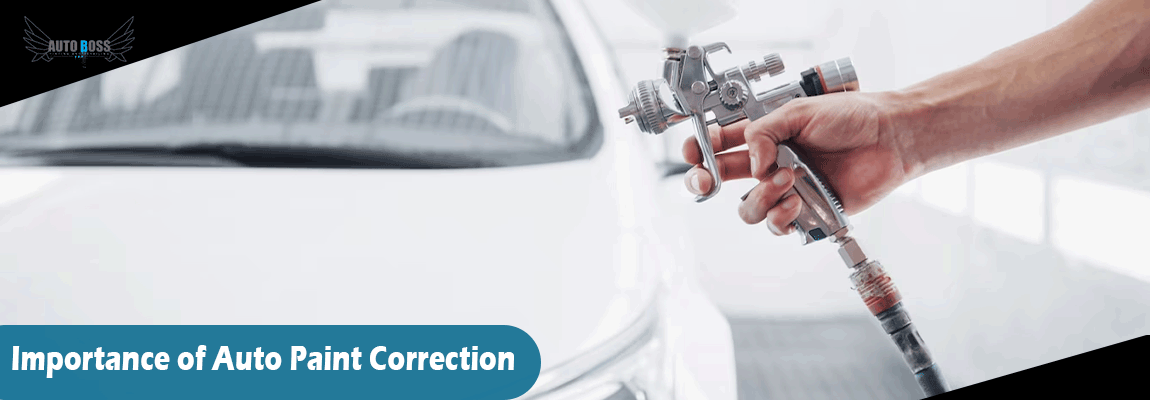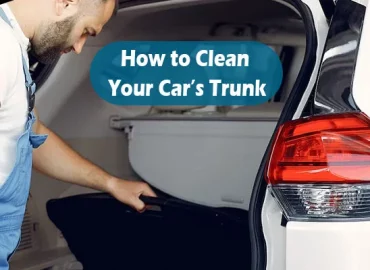Auto Paint correction is not easier, but Auto Boss Vaughan will let you do it.
We clearly and effectively explain and define paint correction services to everyone. It is the most important step in customer services, sales and client satisfaction for paint correction services.
Suppose car owners understand what services are provided by detailing professionals. The communication level develops. Communicating allows car owners and detailers to agree on appropriate services and set the most accurate expectations. Lastly, your customer gets satisfied with your services and they provide proper feedback. It improves the detailer’s ability to work more professionally.
According to auto detailers, the definition of paint correction for your car is different. In this blog, we will help you to know about car detailing.
Paint correction
It is the process to remove imperfections from the car’s surface. The specific machines remove a minor amount of clear coating to restore a reflective finish to restore brightness in the car paint.
The common imperfections known as paint defects include minor imperfections and scratches.
Paint correction surfaces are single-stage automotive clear coat, gel coat and clear exterior plastic.
Common car surface defects can be removed through auto paint correction.
The list of defects that can be removed through paint correction is quite long. However, we will discuss the common defects that can be removed through paint detailing. Some of them include:
- Swirl marks (minor scratches)
- Marring (Abrasion that leaves car surface whiteish)
- Random isolated deep scratches
- Bird Etchings
- Mineral Etchings (Water spots aka)
- Plastic or paint marks
- Paint Oxidation
- Sanding Marks
The benefits of paint correction
- Some of the paint correction benefits include
- Improvement in color: The color becomes more vibrant and brighter
- Gloss: The car surface appears shinier
- Image distinction: the accuracy and ability to reflect objects.
- Clarity: The surface transparency
- Surface Preparation
If your car surface is refined, you can judge transparency/ Clarity level. Gloss, smoothness, and defect-free surface are the only methods to judge clarity. Getting the outer layer of the clear coat makes the light penetrate through, revealing the true and complete optical characteristics of the clear coat layer. When your clear coat is refined, human eyes can examine the clear coat layer and inspect the clarity level.
Detailers explain “clarity” as a highly refined, glossy, defect-free surface. Detailers from Auto Boss Vaughan define clarity as the proof of the paint correction process.
Working on detailing the process
Before the auto detailing process starts, it requires car surface preparation, ensuring both proper evaluation and the best results.
Pre-Detailing preparation
Before polishing, the car surface requires proper cleaning with minimum washing series and decontamination steps. It allows details to reveal the true surface because the products or contaminants can hide imperfections.
Complete cleaning means removing the contamination to ensure the quality of the process. If you don’t remove contamination in this step, you must remove it later in the physical paint correction phase. If the contaminations are left on the surface, it affects the quality of the process and reduces efficiency.
The steps to prepare the surface for correction requires:
- Thorough surface washing and removing loose contaminations.
- Decontamination using a synthetic clay mitt and clay bar removes bonded contamination.
- A ferrous iron removal pulls small metal particles from porous wheels and paint systems.
- Inspection to ensure the accuracy of the cleaning process.
How to remove defects by using the paint correction method
The Auto Boss Vaughan detailers use different machines, pads and solutions to remove defects that appear on the car surface.
Your car detailer needs to remove a clear coat layer to judge the defects’ depth. The quantity of the clear coat to be removed depends on the depth of defects. Every car surface is different and requires independent evaluation.
Don’t worry; a clear coat’s function is to prevent damage to the base coat. The clear coat is important for long-term protection.
Therefore, the goal of a professional auto detailer is to preserve a clear coat to ensure customers’ paint systems’ longevity. He will avoid the unnecessary removal of a clear coat. Auto boss Vaughan detailers remove little paint and get the maximum progress.
Finding accurate correction level
The detailers will evaluate the appropriate paint correction level to identify the car surface’s nuances properly.
- The defect types
- The severity of defects
- Concentration
- Depth
- The paint amount to be removed from the surface
A professional detailer understands and tests the paint system and finds the best solution for your vehicle. Auto detailing paint correction goals depend on:
- The customer requirement
- Budget
- The surface condition.
- The capability and knowledge of the detailer.
- The protection types.
Conclusion
The quality of the auto paint correction depends on the detailing professionals you choose for work. They must have enough information to create a perfect service plan for the vehicle.
FAQs
Is paint correction worth it?
Paint correction is worthwhile and necessary if you notice damage or fading in your vehicle’s clear coating. The corrections include hazing and scratches. Paint correction is necessary to remove swirl marks.
What are the paint correction stages?
Stages of paint correction include:
- Initial assessment and surface preparation.
- Machine correction and polishing.
- Protection
- Quality control
How to maintain paint correction?
You can maintain paint correction through these steps
- Cleaning debris with a clay bar
- Levelling or wet sanding
- Polishing/ waxing
- Resealing the paint




